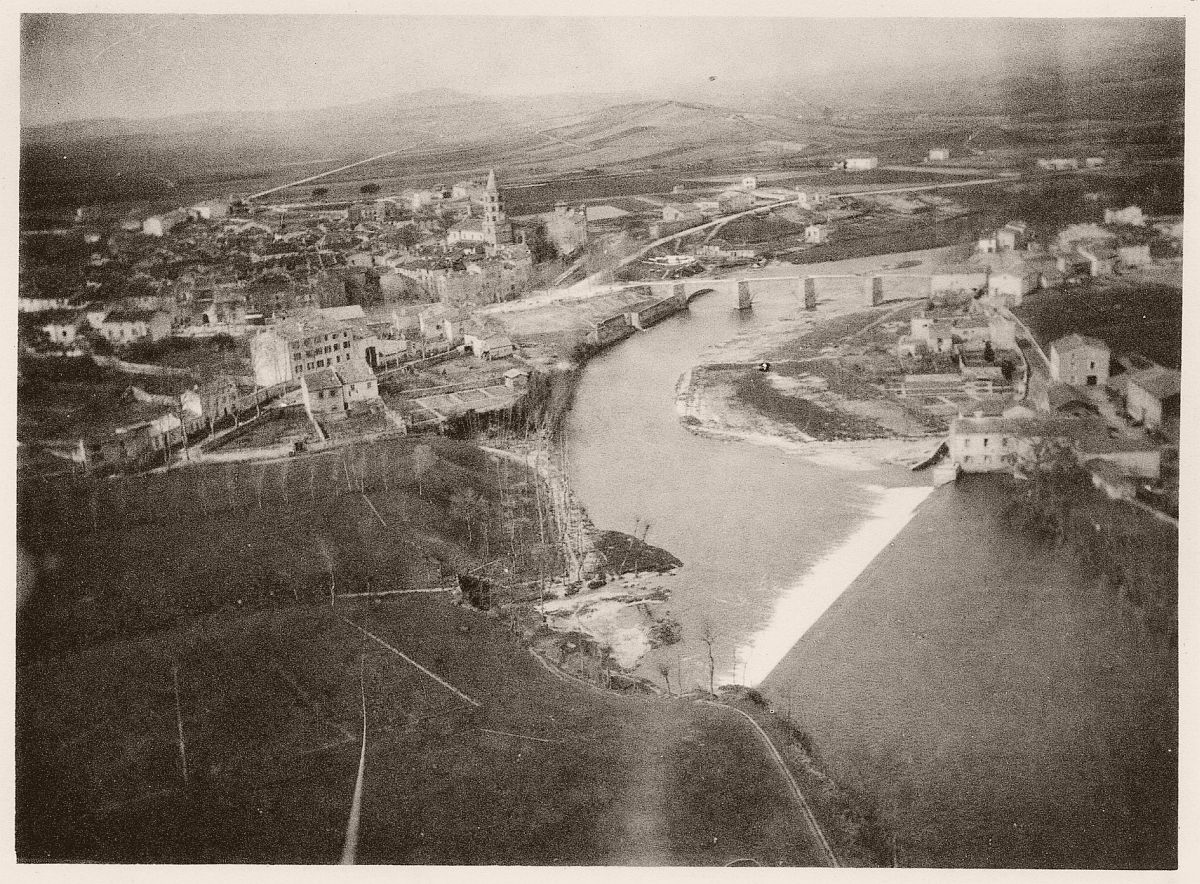Arthur Batut was a French photographer and pioneer of aerial photography. He was born in 1846 in Castres, and developed interest in history, archeology and photography.
Following in the family tradition of academic excellence, he received his degree from of college of Castres before moving to the nearby town of Labruguiere. Batut was fascinated by the art and science of photography, which was still in its infancy. He excitedly purchased a camera and turned one of the rooms in his house into a laboratory. With a child’s curiosity, he would walk the streets of his hometown with his “magic box,” eagerly capturing whatever images caught his eye.
While he greatly enjoyed portrait photography, Batut’s attentions soon turned to aerial photography, to which he had been introduced by the popular French scientific journal, La Nature, founded by famed chemist and aviator Gaston Tissandier.
In 1885, Mr. Tissandier took aerial photographs of Paris with a camera suspended from a balloon that were published in La Nature. Mr. Batut decided to attempt the same feat with a kite, which he built with the help of a plan featured in the February 1887 issue of La Nature. He replaced his kite’s original wicker and bamboo frame with rectangular bars made from Carolina poplar wood. The camera was constructed with wood and cardboard, onto which Mr. Batut loaded film plates measuring 13 x 18 cm. The “Guillotine” shutter was operated with the use of rubber bands, and was activated with a spring that was released by the current generated from an electric fuse. The single objective lens would later be replaced with an anastigmatic objective lens. Wooden tripods supported the camera to ensure freedom of movement.

With construction finally completed, Batut took his first aerial photograph in May 1888, but quickly discovered that the poor image quality was due to the low shutter speed. He corrected this by increasing the rubber band thickness to achieve a 1/100 of a second shutter speed. While Batut’s foray into aerial photography received considerable international media attention, there were critics who complained that while a novelty, using a kite to take aerial photographs was of little practical use. Nevertheless, Batut perfected his techniques and acquired an impressive portfolio of aerial photographs. He wrote of his experiences in ‘La photographie aerienne par cerf-volant’, believed to be the first text on kite aerial photography.
His book on kite aerial photography appeared in 1890. It is believed that in 1887 or 1888 he was the first to use this method successfully. At the time, kite aerial photography had potential applications for aerial reconnaissance, but also for agriculture and archeology. The first aerial photographs had been taken by Nadar from a balloon in 1858. The use of unmanned kites promised obvious advantages in a military setting.
Although best known for his aerial photographs, Batut expanded his professional portraiture repertoire. After reading about Francis Galton’s experimentation with composite sketches of convicted criminals that emphasised certain facial characteristics, Batut began producing similar “type portraits” that were to be used certain distinguishing physiological traits of races, groups, or families (including his own).
Seventy-two-year-old Arthur Batut died of stroke on January 19, 1918. There is a museum in his hometown of Labruguiere that is devoted to celebrating and preserving Batut’s photographic genius and artistic vision.
